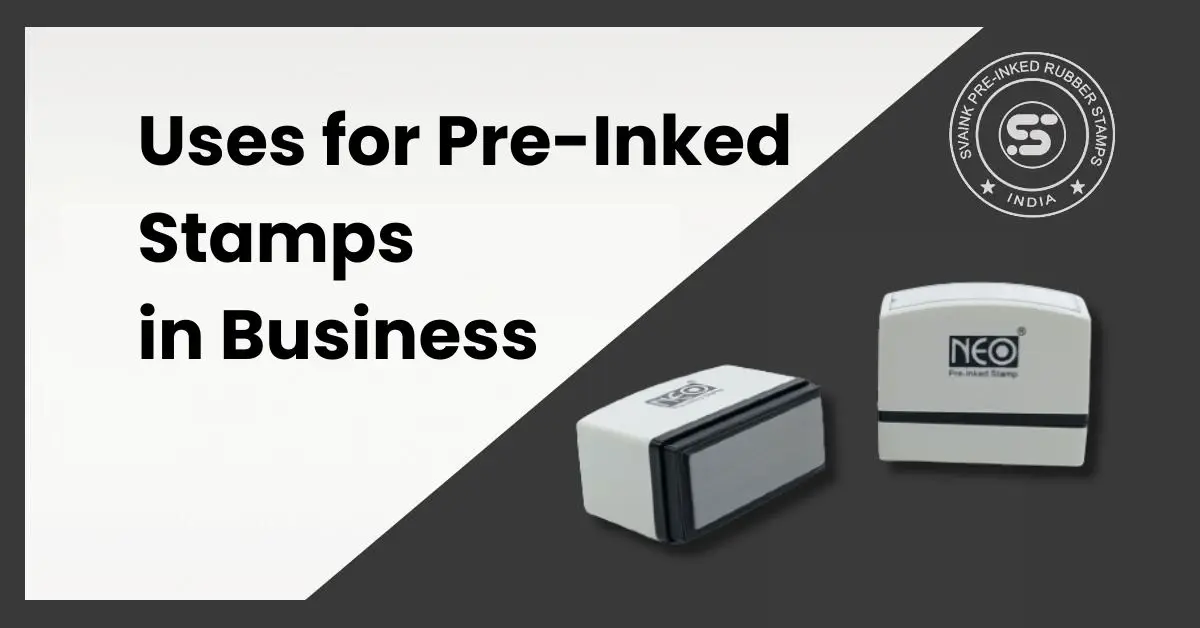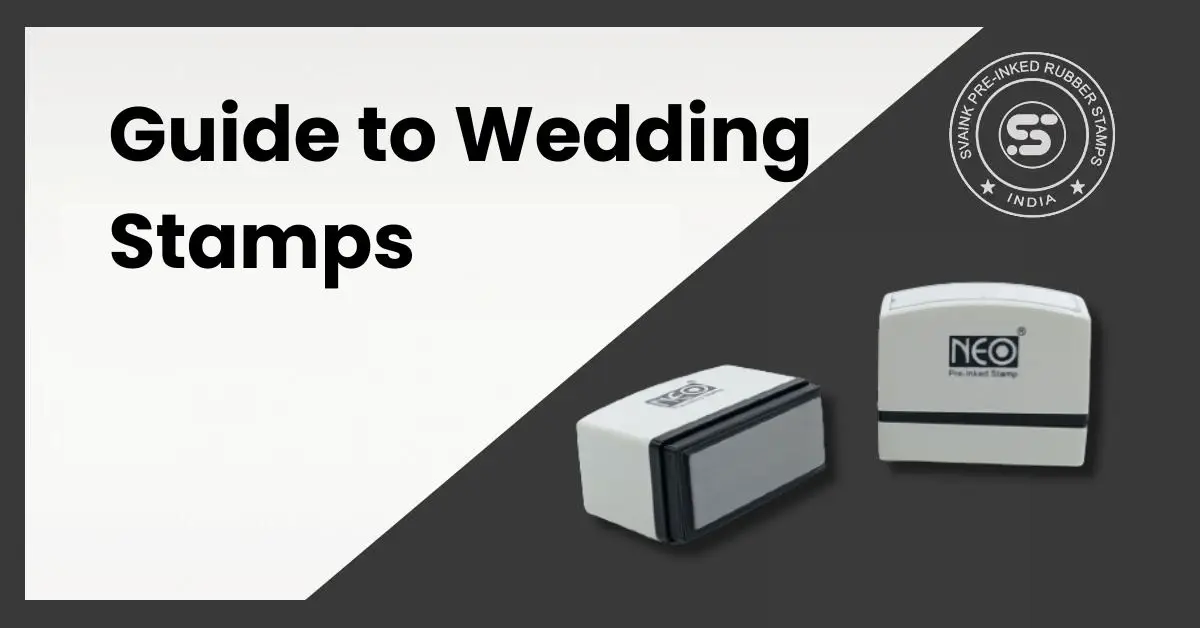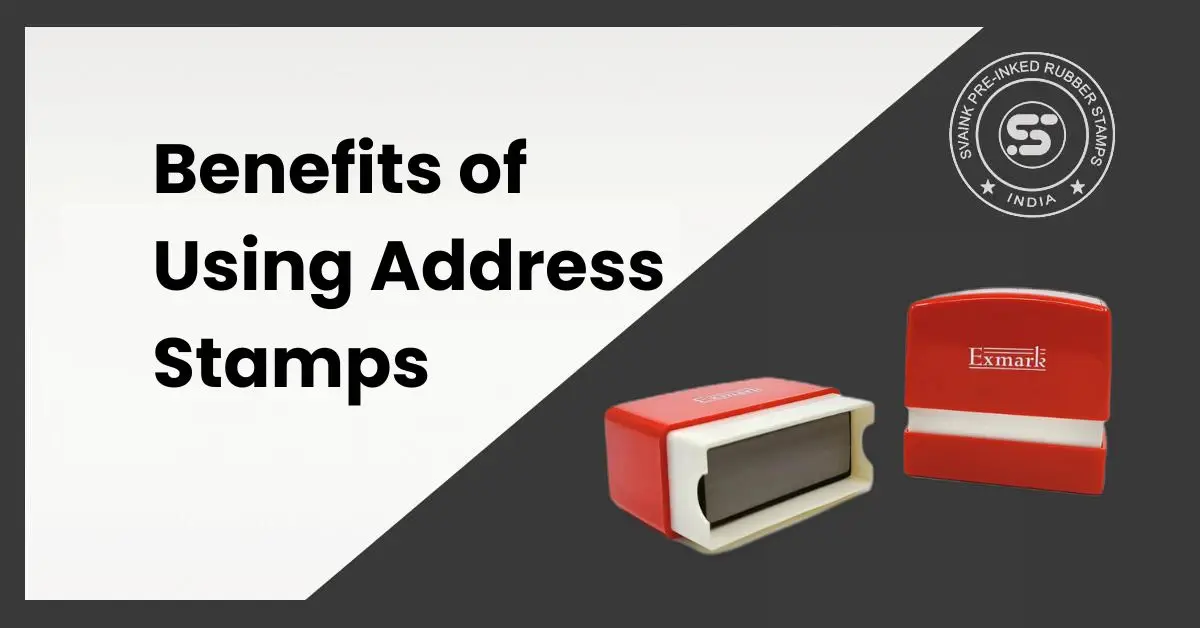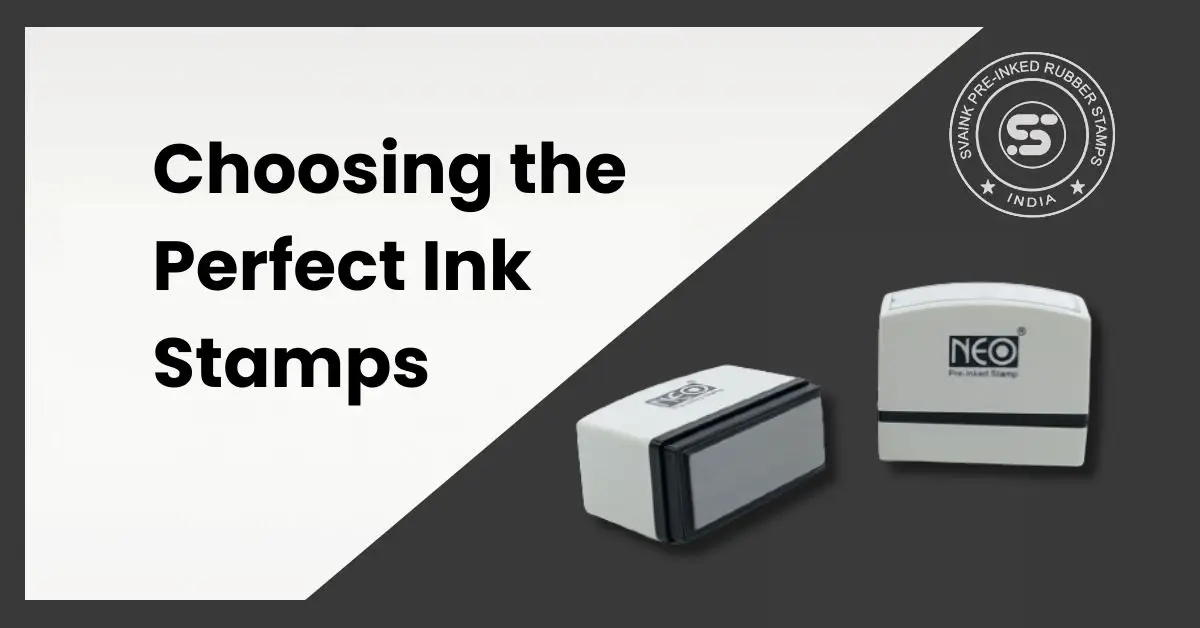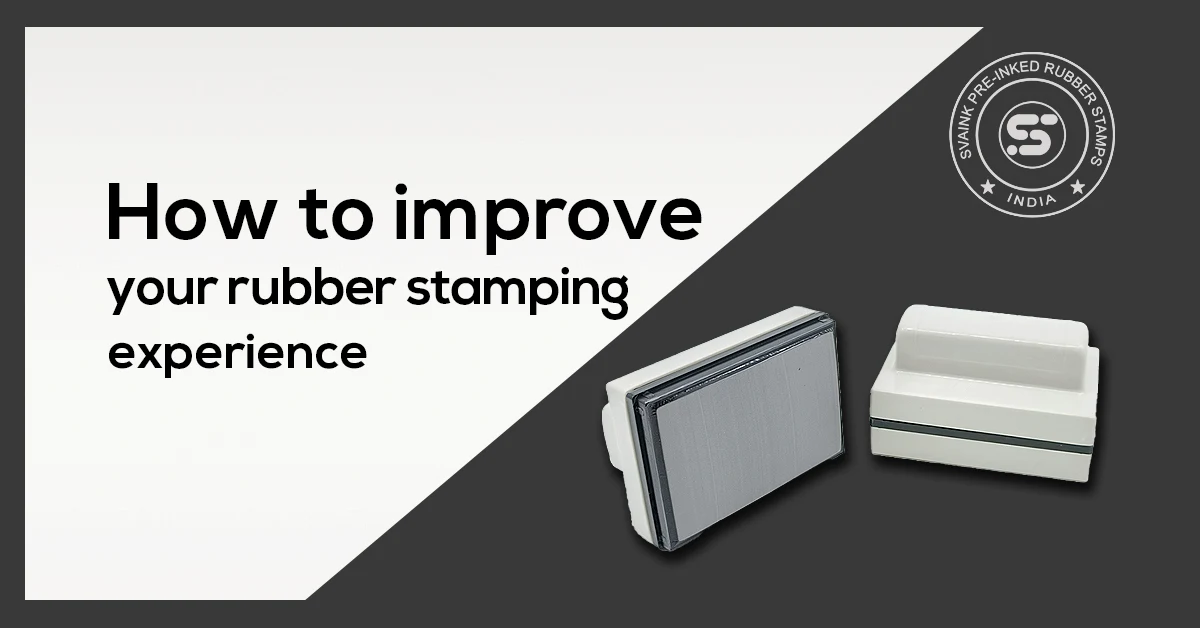
Table of Contents
Rubber stamps are one of the easiest types of printing to use, and they’re great for those who are just learning the craft because they practically require no setup; if you purchase a pre-mounted rubber stamp that is already mounted on wood or metal, you can start printing as soon as you open the box. Though there are a few things you can do to improve your rubber stamping experience, you’ll find that once you get into a routine, they come naturally.
You can encounter some imperfect stamped images if you are just starting out with rubber stamping. Making sure that the rubber stamp is evenly coated with ink is one of the secrets to creating excellent rubber-stamped images. This may seem like a straightforward task, but inexperienced stampers may encounter difficulties such as over- and under-inking, plugged recesses, and other issues.
Steps to improve your rubber stamping experience

Following a few fundamental rules will help to improve your rubber stamping experience
- Inconsistent inking will produce uneven images, which will cause issues. To produce an even printed image, the stamp must be evenly inked.
- Blobby images are produced by over-inked stamps. To remove excess ink, repeatedly tap a stamp on a scrap of paper. Wash the stamp and start again if it has been heavily inked, especially if using pigment inks.
- Images drawn in inked recesses will be hazy. When inking stamps with complicated designs, care must be taken to avoid getting ink into the recessed areas.
- Any new project will probably involve a learning curve that you must overcome. Fortunately, rubber stamping is a pretty simple hobby to learn, but that doesn’t mean there aren’t some traps waiting to catch a beginner.
- When their final stamped image differs from the final picture on the rubber stamp or rubber stamp packaging, rookie stampers frequently lose motivation. This is due to the fact that skilled artists frequently coloured these pictures. In order to sell stamps, stamp producers choose appealing images for the stamp. This has advantages and disadvantages since, while it might give ideas for how the pattern might seem when coloured, it might also be challenging for a new or inexperienced stamper to do.
- Remember that if your finished image does not look like the finished image on the box or stamp, you are likely to be comparing your work with expert artists―so don’t be too hard on yourself! Try out various coloring methods to see which one suits you the best.
- While creating a rubber-stamped picture should be fairly simple, it can occasionally be challenging to get good, reliable results. When you stamp an image onto a sturdy piece of paper, it can be very upsetting to discover that it has been smudged or blurred. The main causes of imperfect pictures include applying too much pressure, applying pressure unevenly, or using a stamp with too much ink.
- When stamping an image, try standing up; this will help you apply consistent pressure.
- Try laying the stamp, inked side up, on a level surface, carefully laying the paper onto this, and then rubbing it with your hand or a brayer if you are having trouble stamping with large stamps. Make sure the stamp has received an even coating of ink.
- Making handcrafted cards is a wonderful use for rubber stamps, but this isn’t the only aspect of rubber stamping. You can use stamps in a plethora of additional ways. For stamping, additional materials including glass, fabric, clay, and more can be employed.
- Try something novel, such as stamping on fabric, shrink plastic, or polymer clay. It’s time to make something for yourself now that you’ve done so many cards for other people. Making rubber-stamped jewelry is a wonderful way to put your stamps to use while also treating yourself.
- With so many lovely stamps, embellishments, papers, and other delights at their disposal, it is understandable that some stampers discover that they have completely outgrown their craft in a startlingly brief period of time. The belief that they must purchase everything on the market is a common error among newcomers. It’s not like that at all! Keep in mind that projects in publications like magazines, books, and websites frequently use a particular brand of product or stamp; however, you can easily use other stamps or products in place of those you already have in your collection.
- When you first start off, keep the essential fundamental supplies. If you’re on a tight budget, think about practical advice and experiment with using recycled materials in your projects.
- A novice stamper might easily go through a small fortune purchasing stamps for every event! Beginners frequently believe they need a stamp for every occasion, but in truth, a small collection of all-purpose stamps can be utilized for a variety of tasks. For example, simple floral graphics are suitable for invites, birthdays, weddings, and other occasions.
- To make sure they may be utilized broadly, purchase stamps without greetings that are not overly seasonal. When working on a project, consider unconventional approaches. For instance, a snowflake stamp inked in vibrant colors simply transforms into an attractive design rather than a wintery snowflake. Think about purchasing digital stamps; they are frequently less expensive than classic rubber stamp and can be a great way to expand your image collection.
- Stamps that are created from photographs and frequently include people or animals are known as photorealistic stamps. Artists that work with altered art and mixed media adore this type of stamp. The use of these stamps is, however, somewhat challenging. Simple outline stamps are a much better place for beginning stampers to start than photo-realistic stamps.
- Before using photo-realistic stamps and other more specialized stamps, gain experience dealing with straightforward stamps.
Rubber stamp storage
- Using the proper rubber stamp storage techniques will help your stamps last longer. The proper storage of rubber stamp will guarantee consistently accurate and reliable stamping results. You won’t have to dig through drawers and boxes to find the ideal stamp every time with the aid of a well-organized stamp storage system. Every stamper has a preferred method for keeping rubber stamp organized. No matter how rubber stamp is preserved, there are a few fundamental needs that must be kept in mind.
- There usually won’t be too much to worry about when you first start. However, once your collection of rubber stamp expands, you’ll need to make sure you can locate the appropriate stamp for a project. The right storage of your stamps will also guarantee that they remain undamaged and always ready for use. Storing the rubber stamps properly will help to improve your rubber stamping experience.
- A rubber stamp storage solution is needed for mounted stamps that enable them to be laid flat on a smooth surface with the dye side (the image) facing down. A stamp may develop permanent dings from prolonged laying on an uneven surface, such as a surface with ridges, and become useless as a result.
- Avoid piling too many stamps on top of one another. The stamps at the bottom of the pile may become damaged due to the weight of the pile. Uneven edges will also result in the degradation of the stamps as mentioned above. Consider finding a way to put your large, hefty stamps in the bottom of a rubber stamp storage solution. Mounted stamps can be stored in cardboard boxes.
- Simply make sure the box has enough strength to support many stamps. Pizza delivery boxes may be used to store stamps, and they’re fantastic because they stack and let you label the contents of each box on the side.
- Keep rubber stamp like pre-inked rubber stamp out of the sun. Rubber stamps that receive direct sunlight degrade the rubber, producing inconsistent stamping results. The rubber will become dried out and stiff and brittle in the sun (and heat).
How to keep acrylic and unmounted rubber stamp safe
- You have more options for rubber stamp storage systems because unmounted stamps are simpler to store. They can be taped to acetate, preserved in CD cases or folders with clear inserts so you can see the stamps inside, placed in envelopes, or stored safely in a number of locations. Unmounted stamps are kept in storage, but it’s crucial to make sure they’re resting flat. Easily harmed if bent or twisted, the stamps.
- The best location to store stamps is in clear plastic boxes. Mark the outside of the container so you can see which stamps are inside.
- Clear stamps can be kept flat and made simpler to locate by being attached to acetate. Make sure that the system you use to store your rubber stamp shields them from dust.
- Cling stamps require special attention when being stored since dust can prevent them from sticking to an acrylic block and make them challenging to use. Stamps can be kept clean and dry by being stored in plastic folders, envelopes, CD cases, and many other containers. Attempt to keep them out of direct sunlight as well.
- The rubber stamp can be properly stored to increase its lifespan and guarantee consistently accurate stamping. You can also discover the ideal rubber stamp every time without having to dig through drawers and boxes with the aid of a well-organized storage system. Every stamper has a preferred method for keeping their stamps organized. No matter how stamps are maintained, there are a few essential characteristics that must be kept in mind.
Conclusion
It’s a good idea to search for rubber stamps that you can envision yourself utilizing in a variety of projects while shopping for stamps. As well as flowers and straightforward geometric patterns, alphabet stamps are a really versatile option. There are many businesses that sell clear acrylic stamps in addition to conventional wood-mounted rubber stamps. You can also go for a pre-inked rubber stamp. These stamps are often a little less expensive than rubber stamps with wood mounts. By maintaining and storing your stamps accordingly, you can improve your rubber stamping experience.


